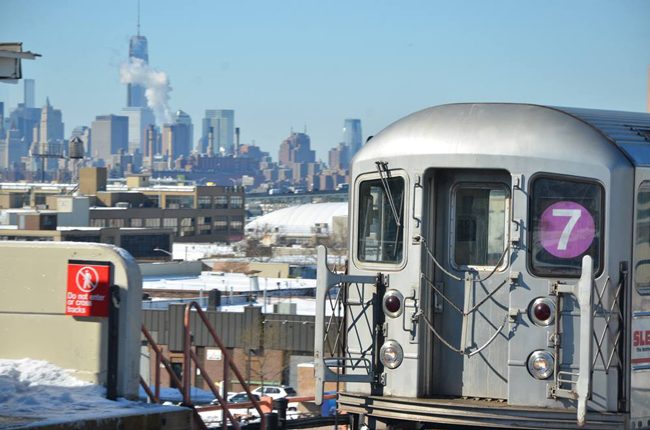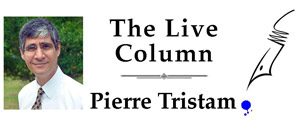
One of its thankfully forgotten mottoes aside (“The cowards never came, and the weak died on the way”), Ellis Island in New York is the place to go to get a sense of how wide-open immigration shaped the country’s identity. Some 12 million immigrants were processed at Ellis Island through 1954. But Ellis Island is immigration’s sepia-colored, mostly white-skinned past.
 In New York, the story of immigration’s present and foreseeable future is on the “Immigrant Express,” the No. 7 subway line that crosses Queens, the country’s single-most diverse county (46.1 percent of its residents were born abroad). The daily morning and evening rush on the 7 train is what the rest of the nation will look like by midcentury: considerably more crowded, a lot less white, a lot more Hispanic, quite a bit more Asian and Caribbean, but also as hardworking and ambitious as ever. When the subway line was down along 10 stops a few weeks ago, the transit authority distributed leaflets in English, Spanish, Chinese and Korean to riders looking for alternatives.
In New York, the story of immigration’s present and foreseeable future is on the “Immigrant Express,” the No. 7 subway line that crosses Queens, the country’s single-most diverse county (46.1 percent of its residents were born abroad). The daily morning and evening rush on the 7 train is what the rest of the nation will look like by midcentury: considerably more crowded, a lot less white, a lot more Hispanic, quite a bit more Asian and Caribbean, but also as hardworking and ambitious as ever. When the subway line was down along 10 stops a few weeks ago, the transit authority distributed leaflets in English, Spanish, Chinese and Korean to riders looking for alternatives.
Queens, where whites are a minority, has its own General Assembly, a United Nations-style forum where community boards and ethnic organizations send volunteers from dozens of countries and races to pre-empt conflict and discuss ways to diminish bigotry, as the de-whitening of the country can rattle some people.
Remember John Rocker? He was the Atlanta Braves pitcher who complained in 2000 to Sports Illustrated about riding the “Immigrant Express” to get to Shea Stadium, where the New York Mets play: “Imagine having to take the 7 train to the ballpark, looking like you’re (riding through) Beirut next to some kid with purple hair next to some queer with AIDS right next to some dude who just got out of jail for the fourth time right next to some 20-year-old mom with four kids. It’s depressing.” Rocker’s brief baseball career took a tail-spin after that, replaced, unsurprisingly, by a “Speak English” campaign that’s netted him a few appearances on the right-wing talk circuit.
Rocker’s reaction wasn’t that unique, or new. In “This Side of Paradise” almost 90 years ago, at the tail-end of the last great immigration boom, F. Scott Fitzgerald gave voice to the Rockers of his day as he described one character’s impressions of a train ride into New York: “When Armory went to Washington the next weekend, he caught some of the spirit of crisis which changed to repulsion in the Pullman car coming back, for the berths across from him were occupied by stinking aliens – Greeks, he guessed, or Russians. He thought how much easier patriotism had been to a homogeneous race.”
There’s no question, it seems to me, that many Americans who speak of diversity in the abstract feel, when faced with its “Immigrant Express”-like expressions, as the fictional Armory or all-too-real Rocker did.
 Change is coming, however. Of the 117 million people added to the current population of 300 million between now and 2050, a Pew Research Center study concluded last week, “67 million will be the immigrants themselves and 50 million will be their U.S.-born children or grandchildren.” The proportion of the population that’ll be foreign-born, not including illegal immigrants, will rise to 19 percent. The record, at the turn of the last century, is 15 percent.
Change is coming, however. Of the 117 million people added to the current population of 300 million between now and 2050, a Pew Research Center study concluded last week, “67 million will be the immigrants themselves and 50 million will be their U.S.-born children or grandchildren.” The proportion of the population that’ll be foreign-born, not including illegal immigrants, will rise to 19 percent. The record, at the turn of the last century, is 15 percent.
To the chagrin of Armory-Rocker reactionaries, the country still has a wide-open admission policy, and foreigners still want to come here by the droves. The attraction may be mostly economic, not idealistic, but that’s been true all along. It’s also one of the unspoken reasons why the American economy keeps growing solidly overall, as opposed to the more population-stagnant economies of Europe and Japan. Immigration makes the country work, and the 7 line shows how absurd the distinction between a legal and an illegal immigrant can be: When everyone’s an avid participant in society, immigration status is irrelevant.
What depresses me isn’t the look and feel of immigration’s new faces, but the Armory-Rocker-like debate that surrounds immigration – the dehumanization of undocumented immigrants, the resentment of non-English speakers, the subtle racism directed at browner skins and that unspoken sense that America was a better place when it was whiter. Then I think back to when I lived in Queens and rode the 7 line every morning and every evening for seven years, and to how I feel every time I ride the line again these days: renewed and reassured, because even at their nastiest, the debates can’t compete with immigration’s prospering reality: Only its absence, legal or “illegal,” could diminish America.
![]()
Pierre Tristam is FlaglerLive’s editor. Reach him by email here or follow him @PierreTristam.




























Leave a Reply